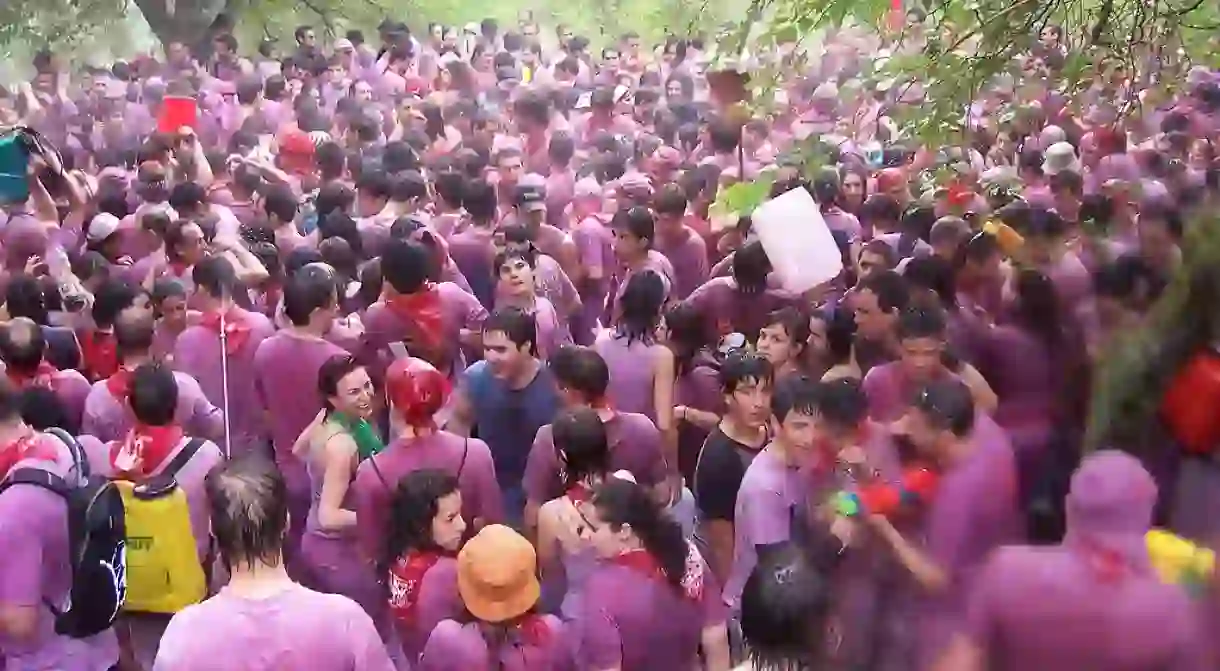The Basque Country’s Top Festivals

Spain hosts some of the world’s best festivals, and the Basque Country is no exception. The Basque Country’s cities such as Bilbao, San Sebastián, Vitoria-Gasteiz, Pamplona, and even parts of France celebrate Basque culture during their festivals, held throughout the year. Here are some of the best.
Aste Nagusia
Also known as ‘Semana Grande’ or ‘Big Week’, Aste Nagusia takes place in the city of Bilbao during the month of August, and is held along the banks of the River Nervion. During the nine-day event, concerts happen in the streets, gastronomy competitions are held, bullfights and regattas take place, and there are nightly firework displays. The festival is also a celebrations of Basque culture, with many Basque sports being played, including pelota and rural sports such as stone lifting and log chopping. A big part of the festival is its mascot – a female puppet-like giant called Marijaia. At the end of the event, Marijaia is burnt and created again next year. Semana Grande also takes place in San Sebastián and is celebrated with fireworks competitions, Basque rural sports, a horse race, and a swimming race.

Batalla del Vino
The ‘Battle of Wine‘ is one of the world’s largest wine fights, and takes place in the small town of Haro, in the La Rioja wine region. The origin of the festival goes back many years to the death of San Felices de Bilibio, when many people would visit the spot where he was buried – the cave of Riscos de Bilibio, just outside the town of Haro. In the 15th century, official pilgrimages were held to visit the cave, and later in the 18th century a chapel was built there. The pilgrimages continued into the early 20th century, when people started undergoing wine baptisms, and slowly the tradition of wine fights began. Today, in the afternoon of the day of the festival everyone dresses in white and heads to a spot near the cave, on a hill outside of town, and proceeds to spray each other with red wine from bottles, water guns, buckets, hoses and any other manner of containers they can get their hands on. When the fight is over, music, drinking, dancing and feasts commence in the town below.

San Fermín
San Fermín, more popularly known internationally as ‘The Running of the Bulls’, is perhaps the Basque Country’s most famous festival. The event takes place in the city of Pamplona each July and runs for one week. During this week, there is a ‘bull run’ every morning, where bulls are released into the city streets and are herded towards the main bullring. Participants, dressed in the traditional red-and-white Basque costume, run with the bulls, aiming to get as close as they can without getting injured. It is usually the men who run; however, some women, as well as some not-so-clever tourists take part, too. If you don’t want to take the risk of being gored, however, the safest place to experience the festival is not from the streets, but from the city’s balconies or the seats inside the main bullring.

Tamborrada
San Sebastián’s Tamborrada is a large drum parade that celebrates its patron saint, held every January 20th. The event beings at midnight in the Plaza de la Constitución, when the city’s flag is raised. The drumming then begins and continues for a full 24 hours. The festival began during the Napoleonic Wars when the French soldiers would bang their drums around the city streets, while the local women would go to collect their water each morning. Some of the locals began to make fun of the soldiers and make their own drums out of pots and pans, banging them with wooden spoons. The tradition continued with the city’s gastronomy societies and has been going ever since. Today, the women dress in traditional costumes, while the men wear either soldier or cooks uniforms when playing the drums.

Virgen Blanca
The Virgen Blanca is the patron saint of the city of Vitoria-Gasteiz, and each year on August 4, the city honours her by holding a large party. The festival begins with the ‘chupinazo’ at 6pm – the ringing of the bells of San Miguel and the Celedón character descending into the crowds gathered at the main city square. Celedón is a symbol of a countryman from Alava and wears a beret, typical shirt, and always carries an umbrella. The partying continues all night, with all ages celebrating into the wee hours, culminating in a firework display and Celedón returning to the bell tower of San Miguel.

Fêtes de Bayonne
The city of Bayonne is actually in France, not in Spain; however, it is still part of the Basque Country. The festival traditions began in 1932 to celebrate Basque culture and to honour the city of Pamplona, with which Bayonne is twinned. The festival begins when the character of King Léon hands over the three keys of the city to its residents, who all dress in the traditional Basque costume of white clothes with a red neck scarf. The next day the king is accompanied by his giant courtiers, his doctor and a chocolatier, representing health and the city’s gastronomical heritage. The third day of the event is dedicated to the city of Pamplona. During the event, there are also concerts, cultural parades, competitions and cow races. The festival ends with a ceremony handing the keys back to the king.














